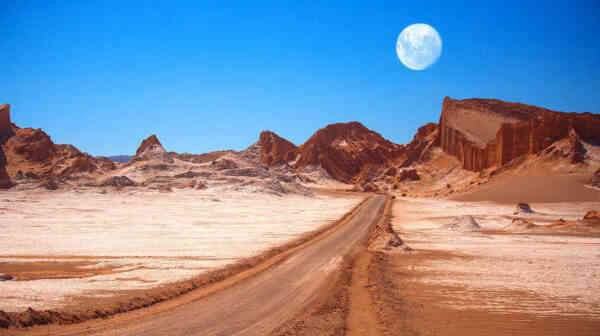Among all the deserts of the Earth, one of the most interesting and famous is the Atacama, located mainly on the territory of the Republic of Chile. These are arid and practically barren lands, but people have learned to survive here, in an area without rain and greenery, although it is unlikely that it was easy for them. But Atacama is surprisingly beautiful, and popular with tourists who like untouched nature, not bustling cities.
Interesting facts about the Atacama Desert
- Most of its territory is covered with vegetation not at all. Occasionally, cacti come across, and life is represented mainly by birds that live on the border of the desert and the sea, eating fish.
- The area of the Atacama is approximately the size of South Korea or Iceland (interesting facts about Iceland).
- Among all the hot deserts, the Atacama is the driest. There has been no significant rainfall in the last 400 years, and less than 50 mm of precipitation usually falls annually. This is generally one of the driest places on Earth (interesting facts about deserts).
- Contrary to popular belief, Atacama does not belong entirely to Chile. Part of it is in Peru.
- Among all the deserts of the world, Atacama occupies only the 21st place in terms of area.
- Archaeologists managed to find perfectly preserved mummies about 9,000 years old in the Atacama Desert. Due to the extreme dryness of this place, the bodies mummified themselves.
- Sometimes in the Atacama, the humidity of the air drops to a record 0 percent. It is very difficult to breathe such dry air.
- Scientists have established that about 120,000 years ago, rivers flowed through the Atacama, but later they dried up, which led to desertification of the area.
- Stretching along the Andes mountain range, it stretches for a length of 1000 kilometers. A whole 1000 kilometers almost without signs of life (interesting facts about the Andes).
- Some peaks of the Andes related to Atacama reach a height of almost 7000 meters, but they do not have snow caps.
- It is hot in the Atacama during the day, but the nights are usually very, very cold.
- Thick fogs can often be observed here during the winter months.
- Despite such harsh conditions, about 1 million people. Almost all of them live on the outskirts of the desert.
- Locals get water using special «fog eliminators», nylon cylinders. The fog condenses on them and flows down into the reservoir. One mist eliminator collects up to 15-18 liters of water per day.
- The largest prehistoric anthropomorphic geoglyph in the world, «giant from Atacama» 86 meters long. Ancient people carved it into the ground over 9,000 years ago.
